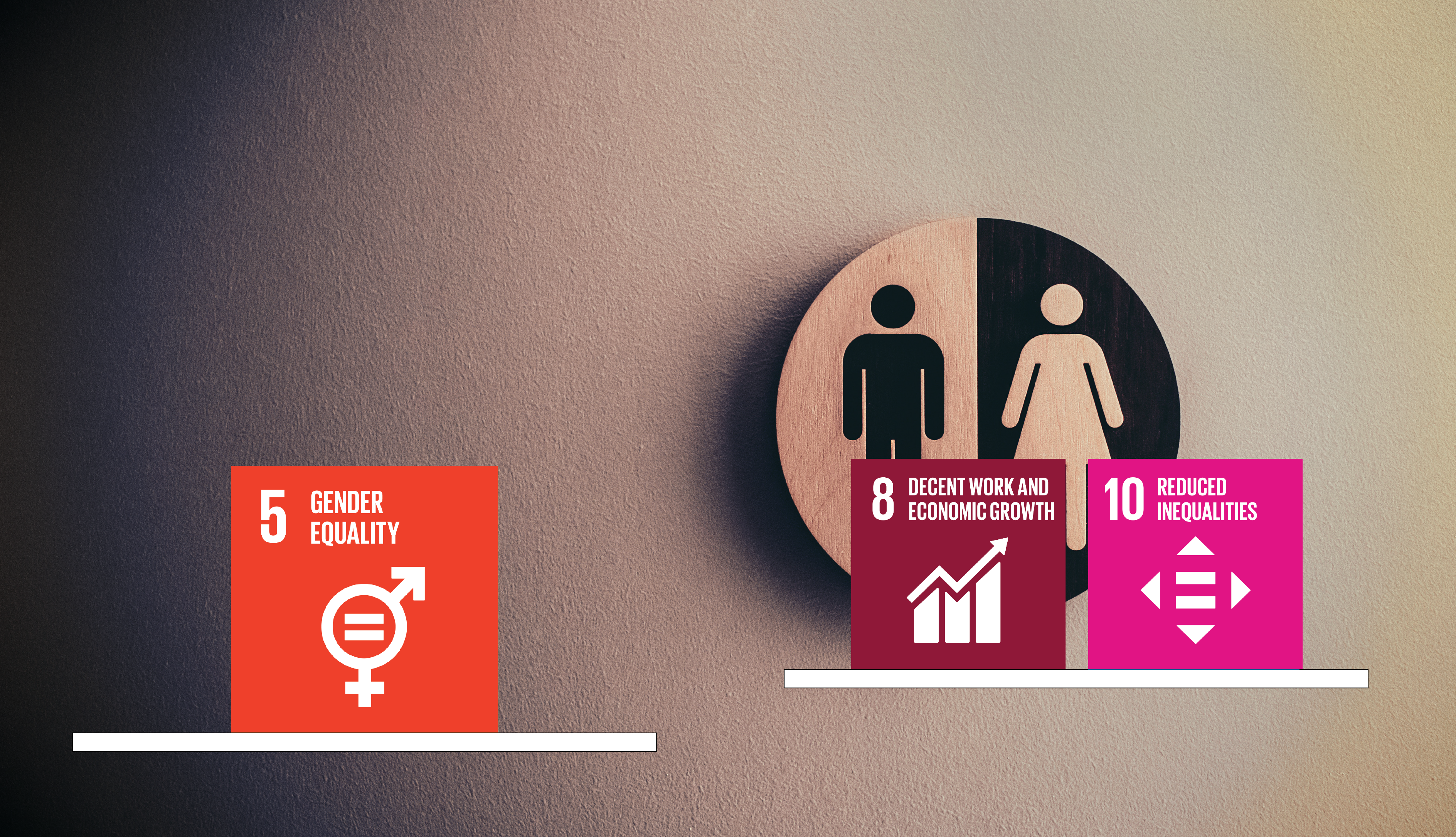COURSE DESCRIPTION:
Your gender has an unfair influence on your economic possibilities. The analysis of three concepts regarding gender inequalities will raise students’ awareness of combating discrimination and promoting equality.
Primary SDG 5, secondary SDG 8 and 10
SDG 5– Gender equality.
SDG 8– Decent work and economic growth.
SDG 10 Reduced inequalities.
Problem Based Learning Methodology
- Problematizes to raise the analysis
- Gets informed/ plays/ investigates/ proposes (call to action) formal ways to shed light on the problem.
PROBLEM STATEMENT
Central concepts are the sticky floor, glass ceiling and glass elevator. We look at the implications of these concepts on our close environment (vertical segregation off the job market).
Working questions:
- Gender gap, who is affected?
- What does it mean to be a woman in the labour market?
- Which are the main inequalities and who are the most affected?
- What can the students and the school do to take part in the change?
- How does education affect inequalities nowadays?
SHARED CLASSROOM
The activities can be divided in different shared session.
Sessions
Day 1
- Presentation and ice breaker (1 hour).
- We get informed: Small mixed groups. Investigation about the three main topics. Each group focuses in one of the three terms. (1 hour).
- Report on work in big group (altogether). (30 minutes).
- Brainstorming about the final product layout, in small mixed groups. (1 hour).
- We play, overall activity reflection on the day highlights through a game (Kahoot). (30 minutes).
Day 2
- We propose and we investigate. The students work in the preparation of their final product in small mixed groups while they investigate. (1,5 hours)
- The small mixed groups share their prototype before the final products with the rest of the class, to get feedback. (30 minutes)
- The students continue with the preparation of the final products after hearing their classmates’ feedback. (2 hours)
- Final product presentation (30 minutes).
- Survey.
The class should be divided in small mixed working groups from both countries (about 4 students max if digital meeting) and all students will be together (big group) for general activities (ice breakers, overall reflections, reports and products presentations).
Lessons:
Shared Classroom 1
Individual Classroom 1
Technology needed:
- Internet connection
- A device to connect, a pc, cellphones or tablet
- Each participant has his/her own device and headphones if possible
LEARNING OUTCOMES
During the project, the students can develop different kind of products:
- Videos
- Brochures
- Power point presentations
- Summary document with recommendations for action
- Articles to be disseminated on local media
- Kahoot
- Poems
- Infographic
For the full Teaching module click on the green button above.
Course Features
- Lectures

